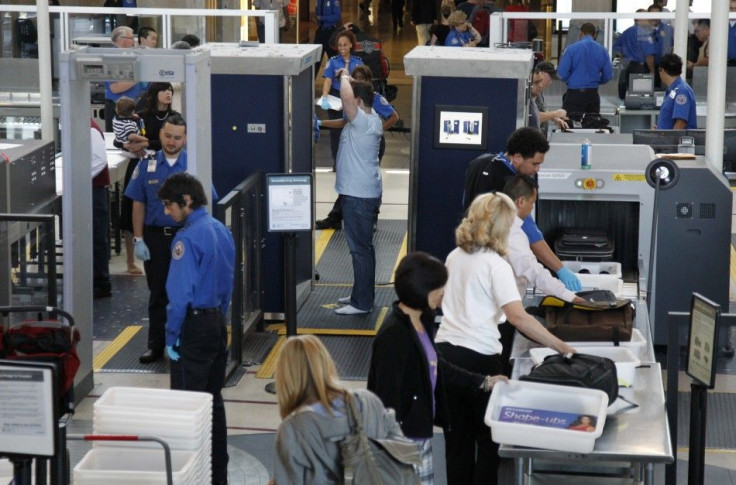Supreme Court Won’t Get Involved In TSA Body Scanner Debate

The U.S. Supreme Court declined Monday to hear a case on the contentious full-body scanners and comprehensive patdowns at airport checkpoints.
Federal courts in Florida and the 11th U.S. Circuit Court of Appeals in Atlanta had previously rejected the case, which was filed by Florida-based blogger Jonathan Corbett, who maintains the website TSA Out of Our Pants!
Corbett believes the Transportation Security Administration’s use of advanced imaging technology and “invasive” patdowns violates passengers’ protection against illegal searches under the Fourth Amendment of the U.S. Constitution. He argued in court papers that the TSA has no unilateral authority to adopt such procedures.
The Supreme Court, however, refused to take up his case, offering no comment on the matter.
“I unfortunately just received news that the U.S. Supreme Court has declined to hear my appeal,” Corbett wrote on his blog Monday. “That’s the bad news. The good news is that the fight is not over. It simply must be continued without that jury, and with discovery and witnesses allowed to me at the discretion of the 11th Circuit.”
Corbett said he will have his 11th Circuit Court filing completed within 30 days and asked for donations from supporters. The blogger and activist says he has heard from thousands of people over the past two years and said he will continue to fight for their rights.
TSA installed body scanners in several U.S. airports in October 2010. It subsequently authorized enhanced patdowns -- which could include the touching of breasts, buttocks and genitals -- for passengers unwilling to submit to those scanners.
Many like Corbett have expressed concerns that the scanners produce revealing images and may emit too much radiation.
TSA blogger Bob Burns, however, challenged Corbett’s claims in a post earlier this year saying that the scanners are “completely safe.” Furthermore, he said “the vast majority use a generic image that completely addresses privacy concerns.”
“We’ve never claimed it’s the end-all, be-all. However, our nation's aviation system is much safer now with the deployment of 600 imaging technology units at 140 airports.”
Burns asserts that the imaging technology has found things as large as a gun and as tiny as a baggie of drugs artfully concealed on passengers’ bodies.
Corbett, meanwhile, says he has easily snuck metal through security, which he says shows that body scanners can’t even detect basic weapons.
© Copyright IBTimes 2024. All rights reserved.






















